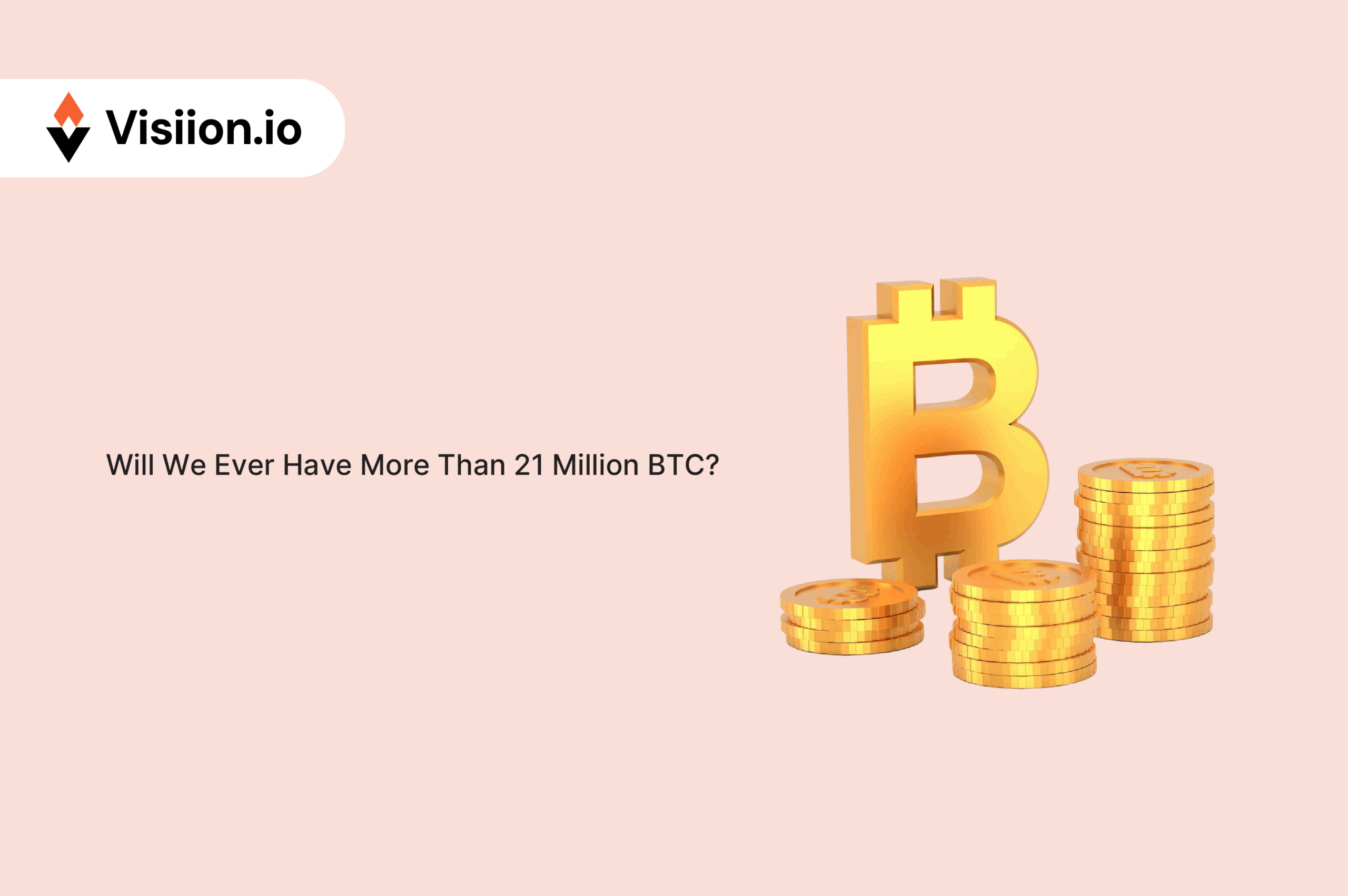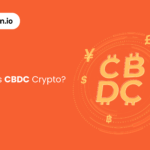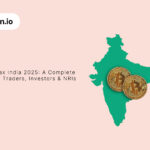Since the inception of Bitcoin, there has been one factor that has helped it stand out. And that factor is its 21 million cap. Now, those who don’t know, there is a cap on the number of BTC that can be minted. And that number is 21 million. It means that once the 21 million BTC are mined, there will not be any more BTC available to anyone. And this is a hard cap.
But time and again, there has been a discussion about this cap. One question that has been asked again and again is, “Will we ever have more than 21 million BTC?” So in this blog, we will dissect the answer to this question. And then you will be amazed at how the answer is not so simple!
What Does a Hard Cap Mean in Bitcoin?
Every currency needs boundaries. Dollars get printed when governments want more liquidity. Gold gets mined as long as new veins appear. Bitcoin works differently. Its code locks the supply at a strict upper limit. That limit is called a hard cap.
A hard cap means no miner can just decide to mint extras. No developer can sneak in an endless supply. The ceiling was baked in at the very start by Satoshi Nakamoto, the mysterious creator.
That cap became the backbone of Bitcoin’s entire story. It’s why people compare Bitcoin to gold. Scarcity fuels value. Scarcity builds trust. Scarcity makes Bitcoin stand apart in a world where money supply usually bends to political will.
Why Did Satoshi Nakamoto Set the Number at 21 Million?
Well, no one got this answer from its creator, Satoshi Nakamoto. So nobody has a definitive answer. Satoshi never published a whitepaper appendix explaining it. But over time, researchers pieced together theories.
One of the most popular theories points to the halving system. When Bitcoin launched in 2009, miners earned 50 BTC per block. Every four years, the reward halves. It means, in 2013, the number of BTC that could be mined dropped to 12.5. Then in 2017, that number dropped to 6.25 and so on. Follow that math forward through the decades, and you approach 21 million.
Another theory ties the number loosely to global economic scales. The supply mirrors traditional monetary systems in a way that feels deliberate. Enough coins to fuel a global economy, but scarce enough to hold value.
Whatever the reason, the exact figure matters less than the principle. Scarcity was the point. Predictability was the goal. The cap gave Bitcoin a monetary policy that no central banker could rewrite. As we all know, any nation can print as much fiat as it wants, since it moved away from gold-backed currency. And BTC wanted to do away with this to fight inflation.
How Does the 21 Million Cap Shape Bitcoin’s Identity?
The cap is Bitcoin’s soul. It turned a line of code into a financial revolution. Without the ceiling, Bitcoin would look like every other token floating in digital markets. With it, Bitcoin feels unshakable.
Think about gold. People value it because nature doesn’t just create new deposits overnight. Bitcoin mirrors that idea but takes it further. Once the supply hits 21 million, the faucet turns off forever. That sense of finality fuels the “digital gold” narrative.
Scarcity also builds trust in decentralization. In traditional finance, someone always has the power to expand supply. With Bitcoin, the code enforces discipline. Every halving reminds people of that promise. Every mined block inches closer to the finish line.
Have People Ever Talked About Changing the Cap?
They have, and the conversations go way back. In Bitcoin’s early years, Hal Finney, one of the first users and the first recipient of a Bitcoin transaction, once mused about introducing mild inflation after the limit was reached. He never pitched it as policy, just a thought experiment.
Later, in 2017, the community clashed over something much smaller: block size. That single debate split Bitcoin into two chains, Bitcoin and Bitcoin Cash. The split showed how fiercely the community defends the original rules. If block size caused such turmoil, imagine the chaos if someone tried to raise the supply.
Talk is easy. Consensus is not. Every time the idea pops up, it meets a wall of resistance.
What Would Happen if the Cap Changed?
Let’s say someone proposes a fork that increases supply beyond 21 million. Developers debate. Miners crunch numbers and communities argue. Eventually, the chain splits. Suddenly, there’s Bitcoin and “New Bitcoin.”
Whether someone likes it or not, the fact is that the scarcity built Bitcoin’s reputation. If scarcity cracks, so does confidence. Prices might wobble, and HODLers might question their future. So if the trust, the BTC has a 21 million cap, breaks, there is a strong chance of turmoil in the market, as per experts.
And that’s the heart of the issue. The cap is trust wrapped in code. Once you tamper with it, the foundation shifts. The story that made Bitcoin valuable loses its sharp edge, according to experts.
Why Do Experts Call It Practically Impossible?
On paper, the code could change. In practice, experts say the chances are vanishingly slim. The resistance sits on multiple layers.
First, the technical hurdle. Every node across the planet would need to accept the change. That’s thousands of independent machines, each enforcing rules.
Second, the cultural resistance. The community treats the cap as sacred. Bitcoin advocates describe it as untouchable, the red line that defines everything else.
Third, the economics. Miners, developers, and long-time holders benefit from scarcity. More supply dilutes their holdings. Few stakeholders would vote against their own interests.
And this combination is what makes the experts believe that the cap is one of the hardest walls in crypto to break. It might be technically possible, but culturally? Practically? Experts say the odds look microscopic.
How Do Transaction Fees Fit Into This Puzzle?
Once, a major concern, as per experts, is the miner incentives. Today, miners earn block rewards plus transaction fees. But rewards shrink every halving. By 2140, block rewards will vanish and only fees will remain.
Satoshi planned for this. He argued that fees alone would eventually cover the cost of securing the network. Each transaction includes a small fee, and as Bitcoin grows, demand for block space rises. Higher demand means higher fees, which keep miners working.
It’s a smooth handoff. Rewards phase out and fees phase in. Incentives shift but never disappear. That transition shows why the cap never needed inflation as a backstop.
How Close Are We to the 21 Million Limit?
As of 2025, more than 19.8 million coins already exist. That leaves less than 1.2 million to be mined. The pace slows every halving, stretching the timeline out more than a century. The very last fraction of a coin won’t appear until around 2140.
Every halving will shrink the Rewards and increase the scarcity. This pushes communities to rally around a specific milestone. These moments remind everyone that Bitcoin plays a long game. While fiat currencies expand supply at political whim, Bitcoin’s path looks like a countdown clock inching toward completion.
Could Forks Create Chains With More Supply?
Yes, forks can, and have created alternative chains. Bitcoin Cash in 2017 proved that. Developers copied the code, tweaked the rules, and launched a spinoff. But the market crowned the original chain as the king.
If someone forked Bitcoin today with a higher supply, it would exist. Exchanges might list it. A handful of traders might even buy it. But history shows that forks rarely gain lasting traction. The network effect, the brand, and the trust stay with the original Bitcoin.
Experts believe that the cap’s power lies not only in code but in belief. As long as the majority believes in 21 million, forks with looser rules sit in the shadow.
What Does the 21 Million Cap Mean for the Future?
It means stability in a market where there is extreme volatility. It means predictability in a market where headlines flip overnight. It means Bitcoin has a story no other asset can tell.
Experts say the cap defines how Bitcoin fits into the global economy. It reinforces the digital gold narrative. It makes governments, institutions, and retail investors treat it with seriousness. Every new cycle, every price run, every halving adds to that mythology.
Changing the number would unravel that mythology. And that’s why most of the BTC communities, experts, and OG holders want to keep it untouched. Untouched BTC is what creates the demand for BTC and its value. With every passing year, the cap is making BTC even more scarce.
Wrapping Up
Now let’s get back to our basic question. Will we ever have more than 21 million BTC? Well, most of the experts today believe it’s possible but not plausible. They believe rewriting the code can be done. But to bring the consensus to do the same is extremely difficult.
In fact, some experts say it’s almost impossible.
They say that rewriting the code of BTC is equal to changing its DNA, and that might destroy the entire purpose of BTC. So a lot of experts believe the hard cap has become a promise to the investors and HODLers. It’s a promise, fiercely defended by those who believe in Bitcoin’s mission.
As of now, the countdown continues. Each mined block edges closer to the finish line. Each halving sharpens the sense of scarcity. And every debate about changing the cap only highlights how central that number remains to Bitcoin’s identity.
We hope you liked the information provided in this blog. If you are interested in more such topics, don’t forget to follow our LinkedIn and Twitter accounts. You can also check our YouTube channel for more interesting stuff.










